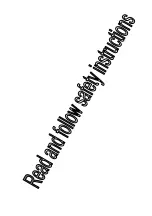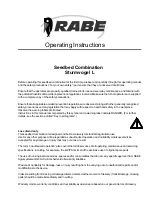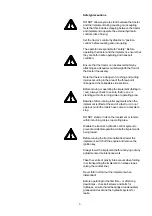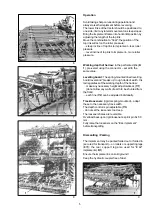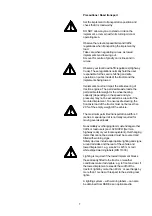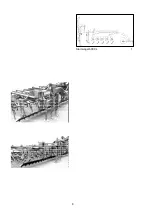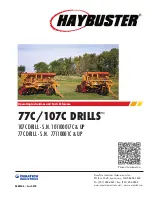
Precautions / Road transport
Set the implement to transportation position and
check that it is roadworthy.
DO NOT allow anyone to stand or ride on the
implement, or remain within its turning circle or
operating area.
Observe the relevant speed limits and traffic
regulations when transporting the implement by
road.
Take care when negotiating curves, as towed
implements tend to swing out.
Account for centre of gravity on inclines and in
curves.
Observe your local road traffic regulations (Highway
Code). These regulations normally hold the user
responsible for the secure hitching and safe
operation on public roads of the tractor and the
implements being towed.
Implements must not impair the safe steering of
traction engines. The permissible axle loads, the
permissible total weight or the wheel bearing
capacity (depending on the speed and tyre
pressure) may not be exceeded as a result of the
mounted implement. To ensure safe steering, the
front axle load of the tractor must not be less than
20 % of the empty weight of the vehicle.
The maximum permitted transportation width is 3
metres. A special permit is normally required for
moving oversized loads.
No avoidably overhanging item must endanger other
traffic or road users (sect. 32 StVZO [German
highway code] or your local equivalent). Overhanging
items that cannot be avoided must be covered and
fitted with warning signs.
Safety devices include appropriate lighting and signs
around all sides and the rear of the vehicle and
towed implement, e.g. size 423 x 423 mm, red/
white striped warning labels (DIN 11030).
Lighting is required if the towed implement blocks
those already fitted to the tractor, or weather
conditions make it advisable: e.g. to front and rear, if
the towed implement exceeds the width of the
tractor’s lights by more than 40 cm, or overhangs by
more than 1 metre with respect to the existing rear
lights.
A lighting system – with warning labels – can also
be obtained from RABE as an optional extra.
7


